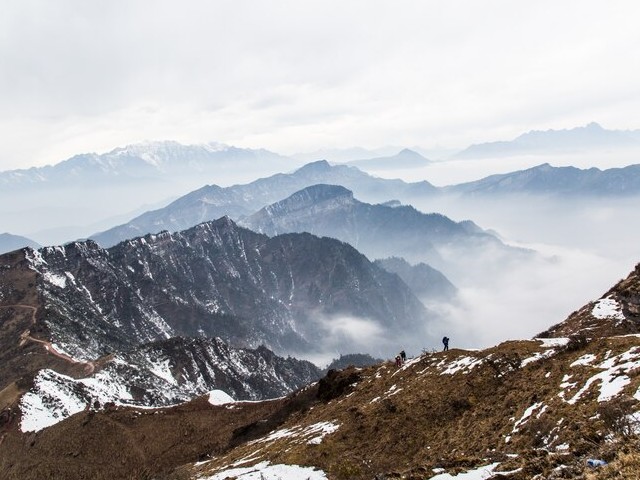Documentary Filming On Kilimanjaro: What You Need To Know
Capturing the Majestic: Your Ultimate Guide to Documentary Filming on Kilimanjaro
Imagine capturing the first light of dawn as it kisses the snowy peak of Mount Kilimanjaro, or documenting the challenging yet inspiring journey of climbers as they make their way up the highest mountain in Africa. Documentary filming on Kilimanjaro offers not just stunning visuals but also a compelling narrative of human endurance and the beauty of nature. At Kilimanjaro Centre for Trekking and Ecotourism (KCTE), we understand the lure of Kilimanjaro and the importance of capturing its essence on film. This guide is designed to help filmmakers navigate the practicalities, regulations, and best practices for a successful shoot on this majestic mountain.
Why Kilimanjaro?
A Cinematic Paradise
Mount Kilimanjaro isn’t just a mountain; it’s a symbol of challenge, beauty, and the rawness of nature. Its diverse ecosystems, from lush rainforests to alpine deserts, provide a backdrop that can dramatically enhance any documentary narrative. Whether you’re filming a feature on climate change, a personal story of triumph over adversity, or the unique biodiversity of the region, Kilimanjaro provides a versatile setting that is as dynamic as it is breathtaking.
Pre-Production Essentials
Securing Permits and Understanding Regulations
Before you can film on Kilimanjaro, you’ll need the appropriate permits from the Tanzania Film Censorship Board and the Tanzania National Parks Authority (TANAPA). These bodies ensure that filming projects adhere to environmental and cultural guidelines that protect the mountain and its communities. Start this process early, as it can take several weeks or even months.
Choosing the Right Season
The best times for filming on Kilimanjaro are during the dry seasons, from late June to October and from late December to mid-March. These periods offer clearer skies and more predictable weather patterns, which are crucial for filming schedules and equipment safety.
On the Ground: Logistics and Preparation
Teaming Up with Local Experts
Partnering with a seasoned tour operator like Kilimanjaro Centre for Trekking and Ecotourism (KCTE) can significantly enhance your filming project. Our deep knowledge of the mountain’s terrain, weather patterns, and local regulations makes KCTE an indispensable part of your production team. We provide logistical support, expert guides, and porter services, ensuring that your crew can focus on capturing the perfect shot.
Equipment Tips
When filming on Kilimanjaro, it’s essential to use gear that can withstand cold temperatures and varying weather conditions. Opt for lightweight, durable equipment that is easy to transport across challenging terrains. Remember to bring ample batteries and storage devices, as charging opportunities on the mountain are limited.
Filming Ethics and Environmental Consciousness
Leave No Trace
It is crucial to approach documentary filming with a commitment to environmental conservation. Kilimanjaro is not only a UNESCO World Heritage site but also a delicate ecosystem that requires utmost respect. Follow the ‘Leave No Trace’ principles, ensuring that your production does not disturb the local wildlife or leave any waste behind.
Engaging with Local Communities
Documentaries often tell powerful human stories, and Kilimanjaro’s surrounding communities are an integral part of its narrative. Engage with local guides, porters, and residents, and consider including their perspectives in your film to enrich the storytelling. Always approach these interactions with sensitivity and respect for local cultures and traditions.
Captivating Moments: What to Film
The Journey Upwards
Document the diverse landscapes and the daily life of climbers and crew as you ascend. Each altitude zone offers unique visuals, from rainforest mists to the stark beauty of the alpine desert.
Sunrise at Uhuru Peak
The summit of Kilimanjaro, Uhuru Peak, is famed for its breathtaking sunrises. Capturing this moment can be the highlight of your documentary, symbolizing achievement and the awe-inspiring power of nature.
Climate and its Impact
Kilimanjaro is an excellent case study for the effects of climate change, as its glaciers have been receding at an alarming rate. Highlighting these environmental changes can add a compelling layer to your narrative.
After the Descent: Post-Production and Story Crafting
Once your expedition and filming are complete, the story crafting begins. Kilimanjaro’s visuals are powerful, but the narrative you weave around them—whether focusing on environmental issues, personal stories, or cultural insights—will determine the impact of your documentary.
Ready to Film Your Kilimanjaro Documentary?
Embarking on a documentary project on Kilimanjaro is an exciting and ambitious undertaking. Remember, choosing the right partners and guides is crucial. At Kilimanjaro Centre for Trekking and Ecotourism (KCTE), we are committed to providing filmmakers with the knowledge, support, and services needed to create a stunning and meaningful documentary. Book your Kilimanjaro climbing experience with us, and let’s bring your vision to life on the highest peak in Africa.
Frequently Asked Questions
How long does it typically take to secure filming permits for Kilimanjaro?
It can take anywhere from a few weeks to several months to secure all necessary permits for filming on Kilimanjaro. It’s advisable to start the application process as early as possible.
What type of clothing and equipment is recommended for a filming expedition on Kilimanjaro?
Opt for layered clothing that can handle cold and variable weather conditions. For equipment, choose items that are robust yet lightweight. Don’t forget ample batteries and storage options.
Can KCTE help with the hiring of local guides and porters?
Absolutely! KCTE not only helps with hiring knowledgeable local guides and porters but also assists in coordinating all aspects of the climb and filming logistics.
By taking the right steps and partnering with experts like us at KCTE, your documentary can tell a story that is as profound as Kilimanjaro itself. Let’s create something extraordinary together!




